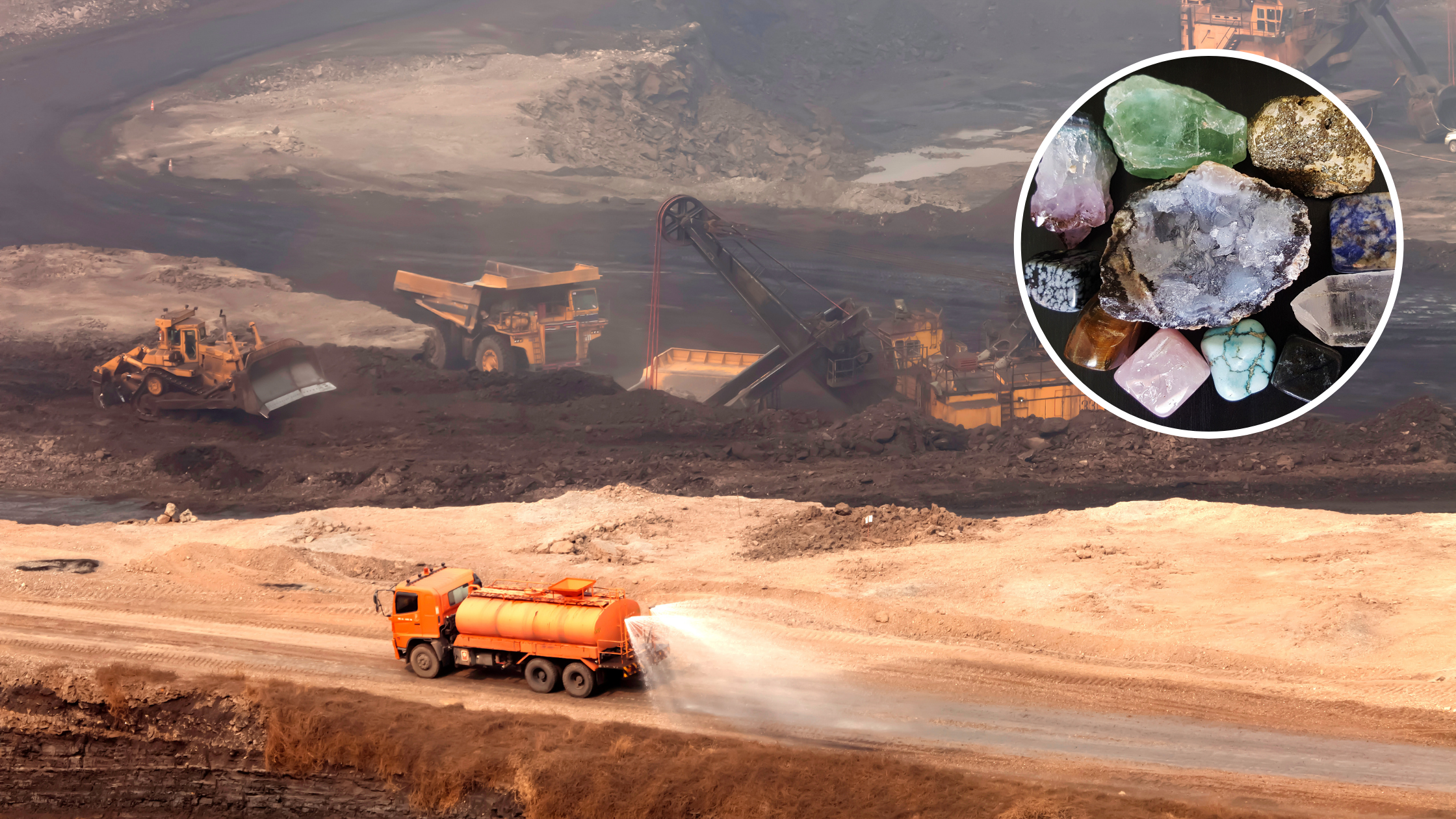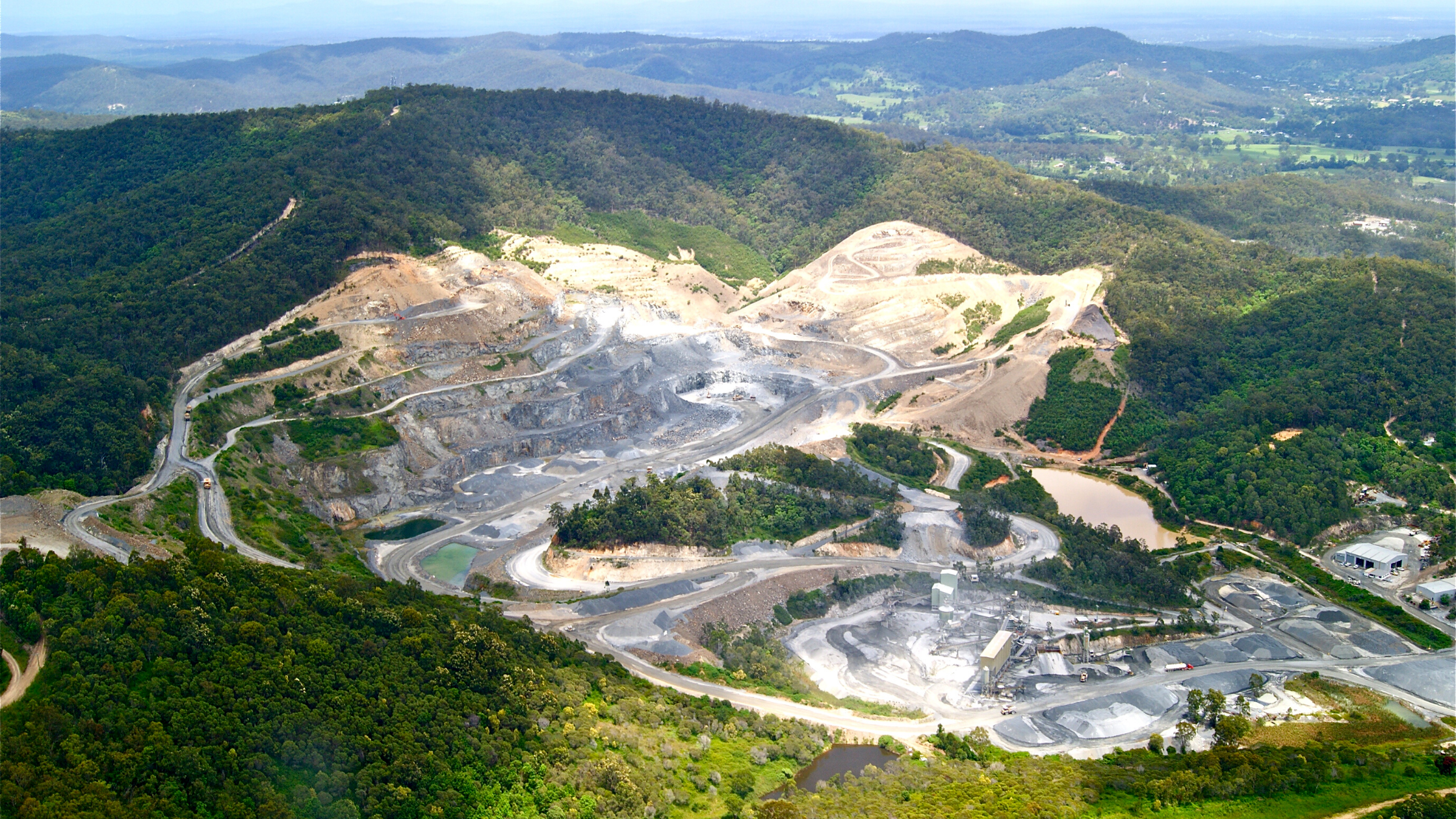Mining has been around for millions of years. It has seen countless developments through the years all aimed at efficiently extracting raw materials from the surface of the earth.
It has fed millions of people and built communities around the world. But despite these benefits, mining is seen as a controversial practice due to the damaging effects it has on nature and communities.
Perhaps like many people you're asking: Why can't we put an end to mining when it poses risks? And if stopping it is out of the question, how can we at least make it less damaging?
What Is Mining?

Mining is the process of extracting metals, minerals, and gemstones from the earth. Almost all metals like aluminum ore, copper, iron ore, manganese, nickel, silver, and gold are produced through mining.
Man has been mining useful materials since prehistoric times, according to the National Geographic. Flint was the first material mined. It was fashioned into tools and weapons because it breaks into shards with sharp edges. Gold and copper mining also traces back to prehistoric times.
Mining is classified into 2 general types:
1. Artisanal and small scale mining (ASM) - This refers to the extraction of metals and minerals with the use of manual labor as well as simple tools and gem mining methods. Often, it doesn't involve the use of heavy mining equipment.
ASM is one of the most important economic activities in many rural communities. It is carried out by individuals, family groups, partnerships, cooperatives, associations, or enterprises.
Here at Stonebridge Imports, half of our products come from the garimpeiros (independent miners) of Ouro Preto in Minas Gerais, Brazil's biggest producer and exporter of gems. Our suppliers live near the major mining sites in Ouro Preto where most high-grade Clear Quartz stones are mined.
We personally know our artisanal miners and sculptors. In fact, our founder regularly goes on geo-mine tours to check on them and their operations. We've been supporting small-scale miners since 2002, which is to say we've established a mutually beneficial relationship with our local suppliers over the years. We rely on them to deliver exceptional products to our customers. And in return, we promote their skills and masterpieces.
2. Large scale mining - This is a mining activity done by a company employing several workers. In this setup, a company mines at 1 or 2 vast sites. The operation goes on until the metal or mineral is completely extracted.
One example of a large-scale mine is the Serra Pelada mine near the Amazon River in Brazil. Before its closure in 1986, Serra Pelada used to be Brazil's largest gold mine which yielded 29,000 tons of gold and employed 50,000 miners during its operation.
The Mining Cycle: What Happens Before, During, and After Mining?

So how does the mining industry operate?
The entire life cycle of mining consists of 5 stages: exploration, discovery, development, production, and reclamation. Each stage provides various economic opportunities for workers involved in the process.
Stage 1: Exploration
In this phase, prospectors and exploration companies conduct research on their target areas. This requires thorough searching for metal- or mineral-rich deposits. After identifying the areas, geological mapping and geophysical surveys follow.
Exploration geologists then assess whether the area contains sufficient materials for profitable mining.
Stage 2: Discovery
Discovery takes place when geologists find something valuable in the site. Companies need to put in excellent planning, field work, geoscience, and good investment to proceed to the development stage.
Societies consume more and more products as they progress, resulting in the depletion of mineral deposits. And this is why the discovery stage is crucial: it attempts to seek potential mineral deposits that can become production mines that will further meet the needs of a society.
The discovery stage entails licenses, permits, and leases for it to proceed smoothly. An environmental assessment is also needed.
Stage 3: Development
The development phase consists of a series of geoscience, engineering, and feasibility studies. If the results of these studies are favourable and all licenses have been obtained, the company then decides if they will pursue the project.
If the project gets the green light, the company will then raise funds to start construction and create a mine.
Stage 4: Production
And along comes production. This is where the extraction, milling, and processing of metals, minerals, coal, and aggregate happen.
How long does production take? It depends on the amount and quality of raw materials being mined in the deposit. The profitability of the procedure also figures in on the duration.
Stage 5: Closure and reclamation
Closure is the last stage in the mining cycle. When all the raw materials have been extracted and the mining operations have to be discontinued, the mine and the facilities will be closed.
Closure is important in ensuring safety around the mine and to prevent environmental and social hazards.
After closure comes the reclamation of the mine site. Reclamation (or rehabilitation) is the process of restoring the mine site to its natural and reusable state.
There are several approaches to do this. It could be through reforestation or developing the land into a residential, commercial, recreational, or agricultural facility.
Any approach is possible as long as the land is converted for a better use for the community and its people. Continuous reclamation is recommended throughout the life of the mine.
Why Is Mining Important?

The essence of mining in our daily lives are summed up in these key points:
1. Minerals don't grow on trees. Apparently, a lot of minerals that are vital components for many products we see around us can't be grown in farms or labs.
We need manganese to produce stainless steel. Copper and tin are essential in making cookwares and pipes. The metal tantalum is used in mobile phones and computers.
Gold, silver, diamond, and many gemstones are used to make jewelry. Lithium, nickel, cobalt, and graphite are all crucial in the production of batteries, solar cells, and wind turbines.
The only way to get ahold of these minerals is by digging deep into the earth.
2. Many countries depend on mining for growth and survival. Mining is the main source of economic opportunities for several developing countries.
About 70 countries rely on the mining industry and most of them are low- to middle-income countries, according to the International Council on Mining and Metals. Around 60 to 90% of foreign direct investment in these countries is attributed to mining.
Artisanal and small-scale mining isn't just vital to the countries and firms leading the extraction of minerals; it is also the bread and butter of families living in poverty.
As many as 80 to 100 million people around the world depend on mining for their livelihoods, according to the International Labour Organization.
Work in small-scale mines may be low-paying and seasonal, but it generates direct employment for 13 million workers who are responsible for 15 to 20% of the world's global supply of precious metals, gems, and even non-fuel minerals.
In general, small-scale mines account for about 50 to 100% of gold, diamond, or gemstone production in a number of countries namely Bolivia, Burkina Faso, Cuba, Guyana, Mozambique, Mexico, Myanmar, the Philippines, and Tanzania.
The size of deposits vary in various locations. But it can't be denied that the economic importance of mining is massive, specifically for communities where employment and income options are inadequate.
3. Mining has to keep up with the evolving demands of developing societies. The World Economic Forum points out that the growth of the mining market is directly linked to social and economic factors.
These factors include urbanization, industrialization, and global demand. The global population growth also drives up the demand for specific metals and other natural resources, especially in the urban populated regions.
The global urban population is projected to increase by 4.8 to 59.7% within the next 10 years. Alongside this development, the base metal mining market is expected to reach 160.19 million metric tons (MMT) by 2023, at an annual growth rate of 5.01%.
Metals that are seen to have a peak in demand are aluminum, copper, lead, cobalt, zinc, platinum, gold, silver, and palladium. These metals are largely used in infrastructure and manufacturing.
These estimations alone give us a picture of how mining is a significant part of progress. And it will continue to play an integral role in society as far as development goes.
Most of the tools, devices, machinery, and other products we use daily won't exist without mining. Many families wouldn't even have food on their table without engaging in mining activities.
So to put it simply: We need mining to survive!
What Are the Health and Environmental Impacts of Mining?

While mining holds a treasure trove of economic benefits for societies, as we've mentioned earlier, it comes with a range of deleterious effects to people and the environment that are widely evident to ignore.
Aware of these consequences, governments and corporations are working together to mitigate these impacts.
Here are some issues associated with mining and what is being done to manage them:
Environmental
- Erosion
- Sinkhole formation
- Fish kills
- Deforestation
- Soil and groundwater contamination (as a result of the leakage of chemicals)
- Air pollution
- Wildlife displacement and habitat destruction
Health (specific to ASM)
- Exposure to dust (silicosis)
- Cyanide and mercury poisoning
- Poor ventilation (heat, humidity, lack of oxygen)
- Rock falls
- Inadequate work space
- Obsolete and poorly maintained equipment
- Lack of knowledge and training
- Lack of protective equipment
In many countries, mining companies are bound by strict environmental and rehabilitation laws and regulations to minimize these hazards and keep them from affecting human health.
Companies are required to lay out plans for environmental impact assessment, environmental management, reclamation, and environmental monitoring before they are permitted to operate and after the closure of their mine.
In Brazil, large-scale and small-scale mining operations are governed by the Mining Law of 1967. The law also includes a provision that mandates artisanal miners to secure an Artisanal Mining Permission (Permissão de Lavra Garimpeira) to legally operate.
This permission is only granted to individuals or entities that have been licensed by environmental authorities. And carrying out mining activities that threaten the environment will result in the revocation of their permit and the immediate suspension of their operations.
The Brazilian Institute of the Environment and Renewable Natural Resources is the federal body that enforces responsible mining and analyzes dangers that arise in the industry.
The Future of Mining
StoneBridge Imports supports a small community of garimpeiros or independent miners in Ouro Preto, Brazil.
We've established how mining supports modern living and understood how a dependence on it has unfavourable consequences.
Considering these realities, it is necessary for the government and the mining sector to roll up their sleeves in addressing the health and environmental issues in the industry if the goal is to make mining increasingly sustainable.
The success in making mining profitable and more socially and environmentally responsible in the future lies in these factors (from the International Labour Organization):
- Artisanal and small-scale miners be equipped with the necessary technical and entrepreneurial skills to ensure the safe and efficient operation of their mines
- Labor and social issues are addressed
- Working and living conditions of ASM are improved
- The environmental impact of small-scale mining (throughout the entire gemstone supply chain is minimized
- Access to finance for small-scale miners is on equal terms with other sectors
- Large-scale mining companies embrace the role of being responsible stewards of the environment
Consumers also have a role to play in the growth of the mining industry. And that is to support rock shops that source their products from independent miners and crafters. The more you patronize their products, the more you help freelance miners sustain their livelihood for the long term.
Bottomline
Despite the undesirable effects linked to it, mining remains necessary to a society's progress. Mining gives us the raw materials with which to create the products we need for survival – from phones, computers, roads, houses, to electricity.
Most importantly, mining provides a source of income to poor families and communities that don't have access to a lot of economic resources.
A lot has to be done to make mining more safe and sustainable in the future. A close collaboration between the government and the mining community is needed to resolve health and environmental concerns embedded in the industry and to protect the welfare of the workers.
Sources:
Mining. (n.d.). National Geographic. Accessed at https://www.nationalgeographic.org/encyclopedia/mining/
Aglee, L. (n.d.). Mining. rainforests.mongabay.com. Accessed at https://rainforests.mongabay.com/kids/lesson_plans/lisa_algee/mining.html
Mielli, F. (2016, February 19). 5 Reasons Why the World Needs Mining ¦And Always Will. Schneider Electric. Accessed at https://blog.se.com/mining-metals-minerals/2016/02/19/5-reasons-why-the-world-needs-mining-and-always-will/ The Mining Cycle. (n.d.). Nova Scotia Canada. Accessed at https://novascotia.ca/natr/meb/education/mining-cycle.asp
Small-Scale Mining on the Increase in Developing Countries. (1999, May 17). International Labour Organization. Accessed at https://www.ilo.org/global/about-the-ilo/newsroom/news/WCMS_007929/lang–en/index.htm
Six Key Factors in Formalizing Artisanal and Small-Scale Mining. (2018, January 22). International Institute for Sustainable Development. Accessed at https://www.iisd.org/articles/six-key-factors-formalizing-artisanal-and-small-scale-mining
Sebastião Salgado's Impressive Photos: This Was Brazil's Largest & Most Dangerous Gold Mine. (2021, July 19). Public Delivery. Accessed at https://publicdelivery.org/sebastiao-salgado-serra-pelada-gold-mine-brazil/
Mine Reclamation. (2021, July 12). Wikipedia. Accessed at https://en.wikipedia.org/wiki/Mine_reclamation
Environmental Impacts of Mining. (n.d.). Wman. Accessed at https://wman-info.org/resource/environmental-impacts-of-mining/
Supporting Progress in Brazil's Artisanal and Small-Scale Mining Sector. (2021, June 12). Igfmining.org. Accessed at https://www.igfmining.org/impactstory/supporting-progress-brazil-asm/
Mathis, A. (2012, February). Artisanal and Small-Scale Gold Mining in the North of Brazil (Amapá and the North of Pará). The Guianas Sustainable Natural Resources Management (GSNRM) Project. Accessed at http://d2ouvy59p0dg6k.cloudfront.net/downloads/2011_artisinal_and_small_scale_gold_mining_in_the_north_of_brazil_1.pdf
King, H. (n.d.). Flint. Geology.com. Accessed at https://geology.com/rocks/flint.shtml
Marchant, N. (2021, July 23). The Organization Planting Millions of Trees in Old Coal Mines. World Economic Forum. Accessed at https://www.weforum.org/agenda/2021/07/green-forests-work-reforestation-climate/
Mining Permit - PLG. (2021, February 16). Chiaviniesantos.com. Accessed at http://www.chiaviniesantos.com/noticia/permissao-de-lavra-garimpeira-plg/





